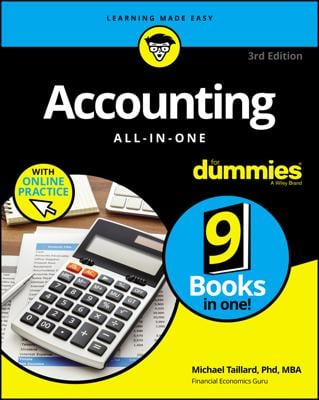After you finalize your General Ledger for the year, you may want to make changes to your Chart of Accounts, which lists all the accounts in your accounting system. You may need to add accounts if you think you need additional ones or delete accounts if you think they will no longer be needed.
You should only delete accounts from your chart of accounts at the end of the year. If you delete an account in the middle of the year, your annual financial statements will not reflect the activities in that account prior to its deletion. So even if you decide halfway through the year to no longer use an account, you should leave it on the books until the end of the year, and then delete it.
You can add accounts to your Chart of Accounts throughout the year, but if you decide to add an account in the middle of the year in order to more closely track certain assets, liabilities, revenues, or expenses, you may need to adjust some related entries.
A Chart of Accounts example
Suppose you start the year out tracking paper expenses in the Office Supplies Expenses account, but paper usage and its expense keeps increasing, so you decide to track the expense in a separate account beginning in July.
First, you add the new account, Paper Expenses, to your Chart of Accounts. Then you prepare an adjusting entry to move all the paper expenses that were recorded in the Office Supplies Expenses account to the Paper Expenses account.
The adjusting entry shown below is an abbreviated one. In the actual entry, you would probably detail the specific dates paper was bought as an office supplies expense rather than just tally one summary total.
| Debit | Credit | |
|---|---|---|
| Paper Expenses | $1,000 | |
| Office Supplies Expenses | $1,000 | |
| To move expenses for paper from the Office Supplies Expenses account to the Paper Expenses account. |
Moving beyond the Miscellaneous Expenses account
When new accounts are added to the Chart of Accounts, the account most commonly adjusted is the Miscellaneous Expenses account. In many cases, you may expect to incur an expense only one or two times during the year, therefore making it unnecessary to create a new account specifically for that expense.
After a while, you find that your “rare” expense is adding up, and you’d be better off with a designated account, meaning that it’s time to create some adjusting entries to move expenses out of the Miscellaneous Expenses account.
For example, suppose you think you’ll only need to rent a car for the business one time before you buy a new vehicle, so you enter the rental cost in the books as a Miscellaneous Expense. However, after renting cars three times, you decide to start a Rental Expense account mid-year.
When you add the Rental Expense account to your Chart of Accounts, you need to use an adjusting entry to transfer any expenses incurred and recorded in the Miscellaneous Expense account prior to the creation of the new account.

